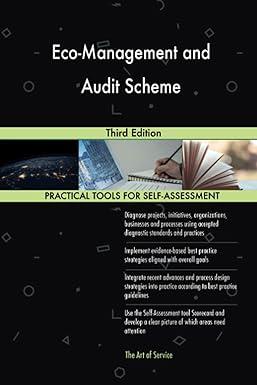Question
Many large companies are diversified across several lines of business. Each line may be subject to unique competitive factors and may react differently to changes
Many large companies are diversified across several lines of business. Each line may be subject to unique competitive factors and may react differently to changes in the economic environment. For example, a large company such as Johnson & Johnson operates in several major lines: consumer, pharmaceutical, and professional. Its products include disposable contact lenses, baby products, surgical products, antibody therapies, and cold and flu medications. In addition, a company is exposed to different risks in each of the markets in which it acquires its production factors. Consolidated statements present all of these different factors in a single-entity context. The purpose of segment reporting is to allow financial statement users to look behind the consolidated totals to the individual components that constitute the entity.
Accounting Standards Codification 280 takes a management approach to defining segments, and accordingly defines an operating segment as having following three characteristics:
- The component unit's business activities generate revenue and incur expenses, including any revenue or expenses in transactions with the company's other business units.
- The component unit's operating results are regularly reviewed by the entity's chief operating decision maker, who then determines the resources to assign to the segment and evaluates its performance.
- Separate financial information is available for the component unit. (FASB, 2013)
To help companies determine if segment reporting is required, the FASB has specified three 10% significance rules. Segment reporting and disclosures are required for segments meeting at least ONE of the following tests:
- The segment's revenue, including both external sales and intersegment sales or transfers, is 10 percent or more of the total revenues from external sales plus intersegment transactions of all operating segments.
- The absolute value of the segment's profit or loss is 10 percent or more of the higher, in absolute value, of (a) the total profit of all operating segments that did not report a loss or (b) the total loss of all operating segments that did report a loss.
- The segment's assets are 10 percent or more of the total assets of all operating segments.
Instructions:
Read the scenario below.
Blue Lagoon Inc., a publically-traded company, manufactures a wide variety of scuba diving equipment and supplies, in addition to owning a chain of retail scuba stores and scuba diving training centers. Eighteen months ago the company developed and began to market a new product line of oxygen tanks under various trade names. Sales and profitability of this product line during the current fiscal year greatly exceeded management's expectations. The new product line will account for 10 percent of the company's total sales and 12 percent of the company's operating income for this fiscal year. Additionally, Management believes sales and profits will be significant for several years. Blue Lagoon is concerned that its market share and competitive position may suffer if it discloses the volume and profitability of its new product line in its annual financial statements. Management is not sure how ASC 280 applies in this case.
Visit the FASB website www.fasb.org (Links to an external site.) and access the Accounting Standards Codification. Research the accounting standards for guidance on the scenario above.
Discuss the following questions in your initial post:
- Is Blue Lagoon required to report the Scuba Tank operations as a separate segment? Please justify your opinion.
- What options, if any, does Blue Lagoon, Inc. have with the disclosure of its new product line? Be sure to explain your answer and support your conclusions with references to the authoritative literature.
Step by Step Solution
There are 3 Steps involved in it
Step: 1

Get Instant Access to Expert-Tailored Solutions
See step-by-step solutions with expert insights and AI powered tools for academic success
Step: 2

Step: 3

Ace Your Homework with AI
Get the answers you need in no time with our AI-driven, step-by-step assistance
Get Started


